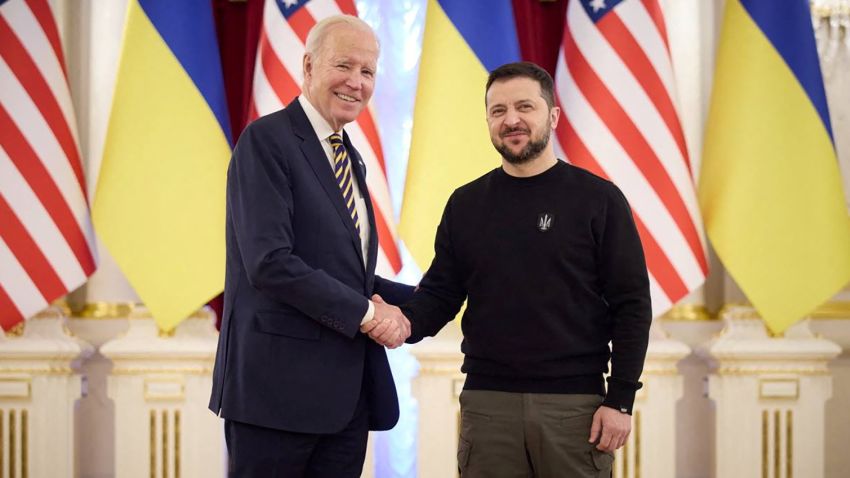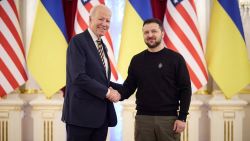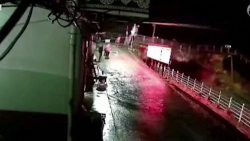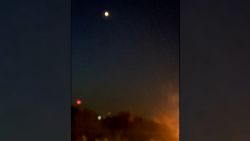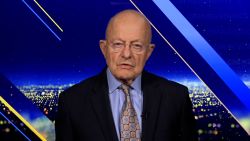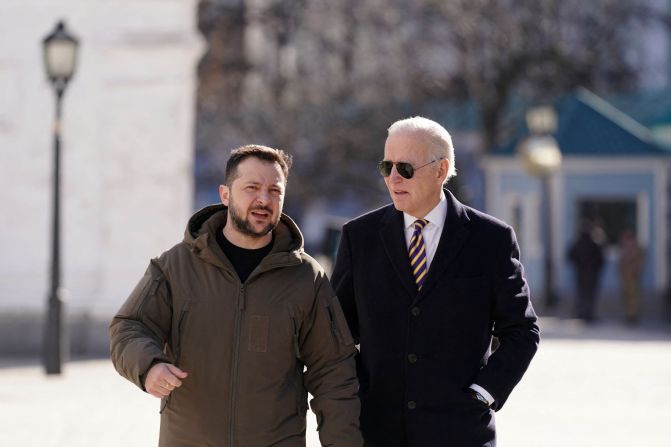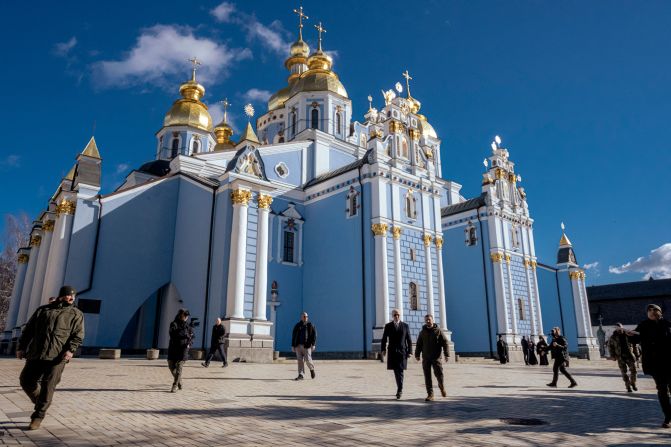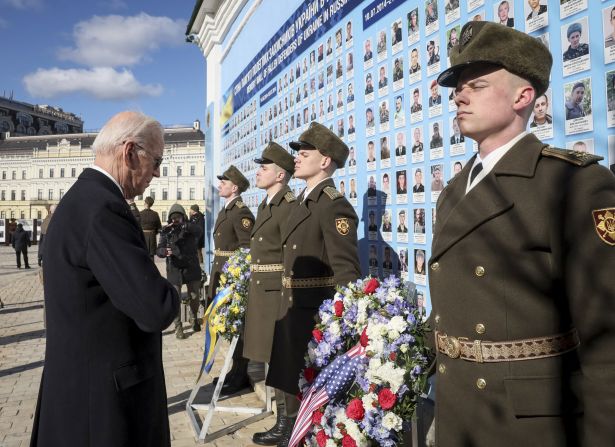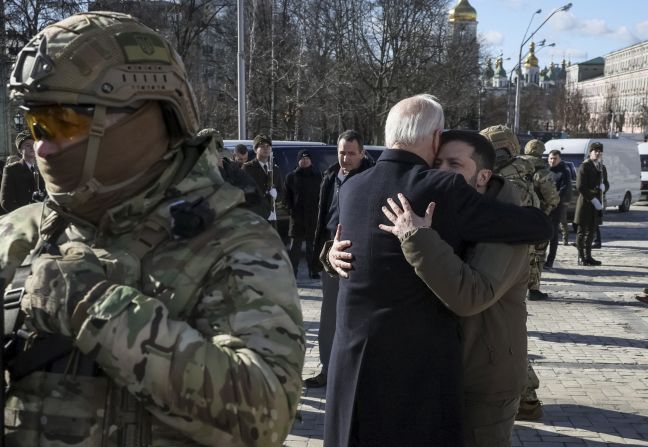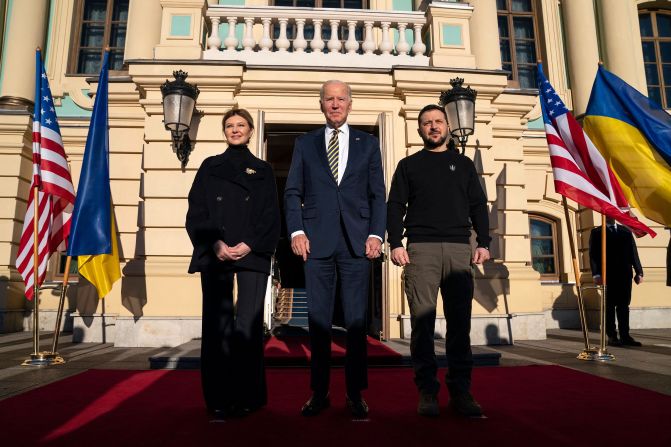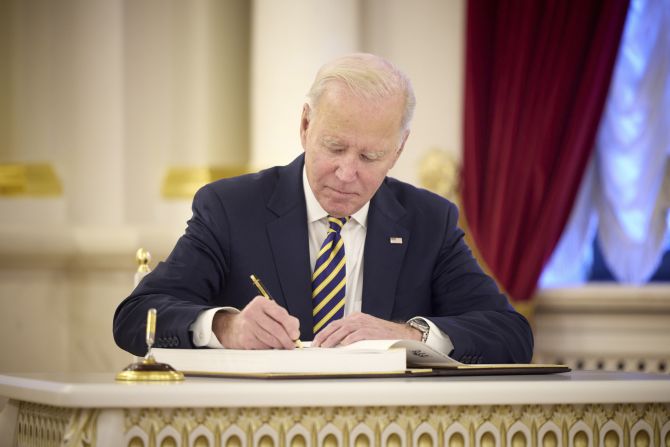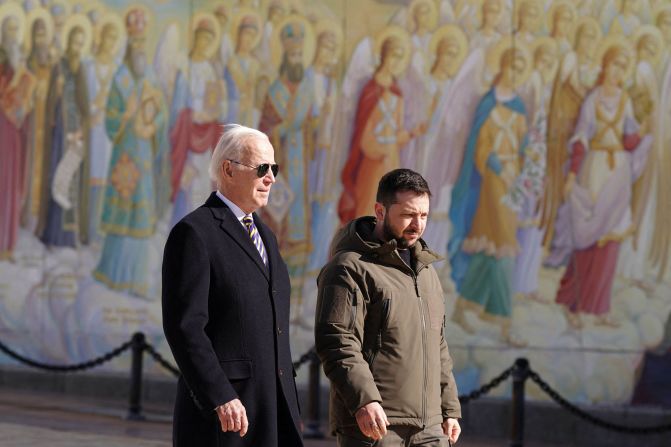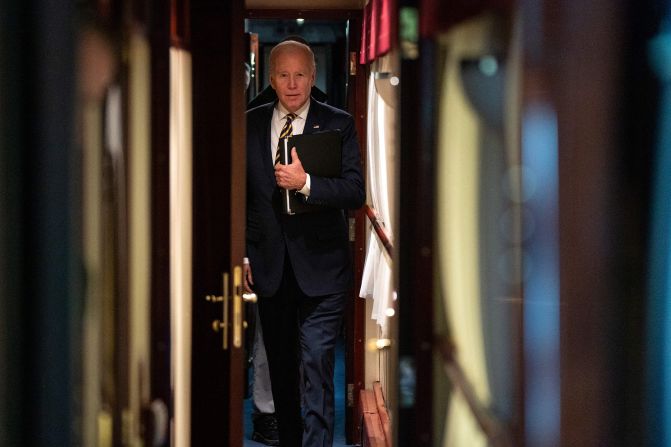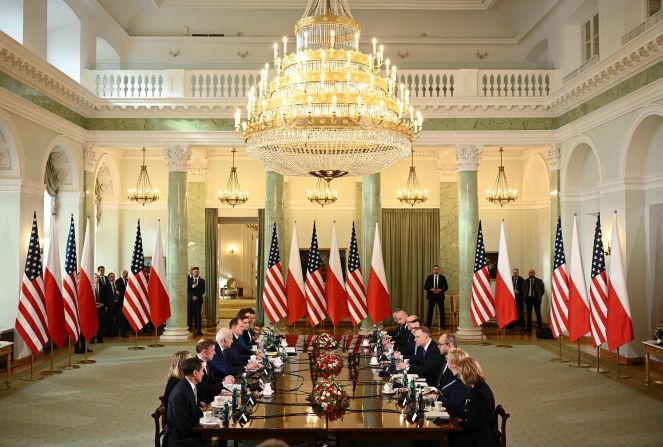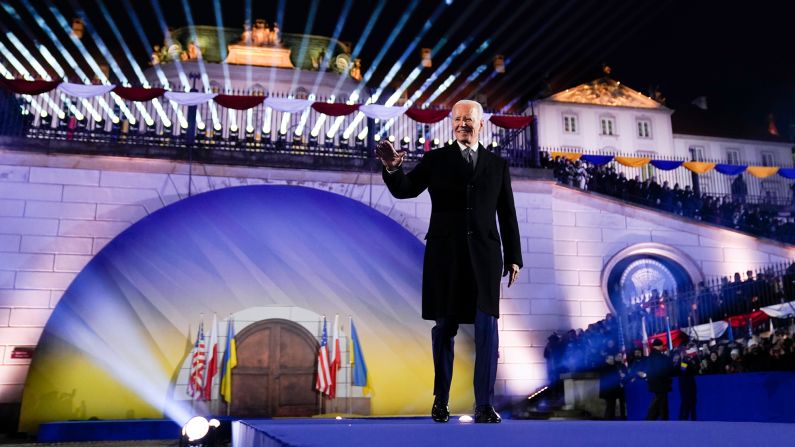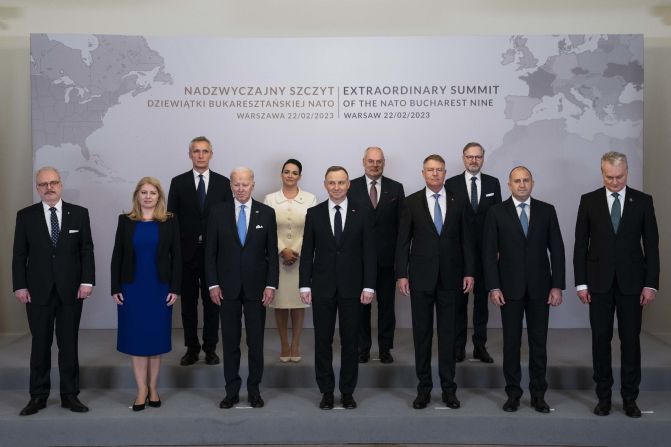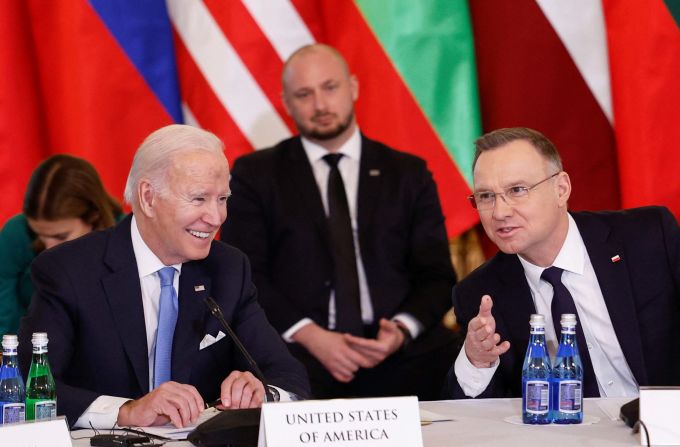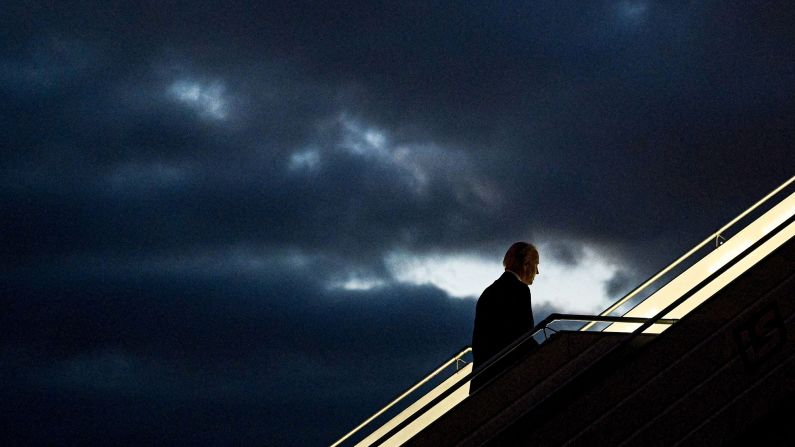Around 7 p.m. ET on Saturday night, President Joe Biden was out in Washington on a Valentine’s week date-night, lingering over rigatoni with fennel sausage ragu before returning with his wife to the White House.
The next time he was seen in public was 36 hours later, striding out of St. Michael’s Cathedral in Kyiv into a bright winter day, air raid sirens wailing a reminder of both the risks and reason for visiting Ukraine as it nears a second year of war.
Cloaked in secrecy and weighted with history, Biden’s trip was the work of months of planning by only a small handful of his senior-most aides, who recognized long ago the symbolic importance of visiting the Ukrainian capital a year after Russia tried to capture it.
“One year later, Kyiv stands,” Biden declared Monday. “And Ukraine stands. Democracy stands.”
Yet it was more than symbolism that drove Biden to endure the significant risk of visiting an active war zone without significant US military assets on the ground.
In conversations behind closed doors at the Mariinsky Palace on Monday, Biden sought to engage President Volodymyr Zelensky in a detailed and urgent discussion about the next phase of the war, which US officials describe as having arrived at a critical juncture.
How the war advances in the coming months will depend in large part on the continued support of the United States, which Biden pledged Monday would be unceasing. If his message was meant as a reassuring one for Ukrainians, it was also intended as a reminder to Americans that the stakes of the conflict extend well beyond Ukraine’s borders.
In photos: Biden visits Ukraine and Poland
A secret until the last minute
“This is so much larger than just Ukraine. It’s about freedom of democracy in Europe, it’s about freedom and democracy at large,” he said, his blue-and-yellow tie an overt nod to his Ukrainian hosts.
Keeping Biden’s plans secret required extraordinary measures on the part of the White House. In the weeks leading up to Biden’s travel, he and top aides repeatedly shot down the possibility of a trip to Ukraine. Every effort was made to maintain that position in the hour leading up to Biden’s surprise arrival in Kyiv.
That was in part due to the fluid nature of the trip itself. Even as the small circle of White House officials looped in on the planning grew confident it was an achievable undertaking, the realities of sending a president into a war zone where the US had no control over the air space were daunting.
The final decision was made in an Oval Office meeting on Friday evening, when Biden gave the final green light. Once the trip was on, US officials took steps to notify Moscow of their plans, an attempt at “deconfliction” meant to avoid unthinkable disaster while Biden was on the ground.
In Washington, however, the secrecy had to be maintained to actually pull it all off.
No notice was given to reporters on Sunday that Biden was no longer in Washington. The official White House schedule, released Sunday evening, still listed his departure for Poland at 7 p.m. ET on Monday.
His top national security spokesman denied there was a possibility the president would visit Ukraine in an interview that aired Sunday morning.
“We’re going to continue to use our convening power, to marshal the world, to galvanize support for Ukraine, but there are no plans for the president to enter Ukraine on this trip,” NSC spokesman John Kirby said in an interview on MSNBC’s “The Sunday Show with Jonathan Capehart.”
But at that point, Biden had already lifted off from Joint Base Andrews hours before, not in the usual plane that is synonymous with Air Force One, but instead in a smaller Air Force C-32.
Aboard was only a small clutch of senior advisers, one reporter and one photographer – whose electronic devices were taken from them before departure.
A 10-hour train ride through Ukraine
There would be a stop to refuel at a US base in Germany before continuing the flight into Poland. As he jetted eastward, Biden’s focus was plotting out his conversations with Zelensky, hoping to use his limited time wisely in discussing the coming months of fighting.
Biden landed in Rzeszow, the Polish town where he’d stopped in March of last year to visit US troops deployed near the Ukrainian border and humanitarian efforts supporting Ukrainian refugees. During that visit 11 months ago, he alluded to what became a long-running desire to extend his journey just a little further into Ukraine.
“I’m here in Poland to see firsthand the humanitarian crisis and quite frankly, part of my disappointment is that I can’t see it firsthand like I have in other places,” Biden said then. “They will not let me – understandably, I guess – cross the border and take a look at what’s going on in Ukraine.”
This time around, with an expanded set of US air assets overhead keeping close watch at the Polish border, he would make the trip. Biden, his small contingent of advisers and Secret Service that traveled with him boarded the train to Kyiv for the roughly 10-hour trip to the center of the war-torn country.
It was the culmination of a process that began months earlier, as Biden watched as a parade of his foreign counterparts each made the journey into Ukraine.
They first began visiting Kyiv in March 2022, when the prime ministers of Poland, Slovenia and the Czech Republic all arrived by train. Then-British Prime Minister Boris Johnson visited April 9, followed by visits from Canadian Prime Minister Justin Trudeau, German Chancellor Olaf Scholz, French President Emmanuel Macron and then-Italian Prime Minister Mario Draghi.
US Secretary of State Antony Blinken and Defense Secretary Lloyd Austin visited Kyiv on April 25 to meet Zelensky, at that point the top US officials to visit. Even first lady Dr. Jill Biden paid a surprise visit on Mother’s Day last year to a small city in the far southwestern corner of Ukraine. She met with Ukrainian first lady Olena Zelenska.
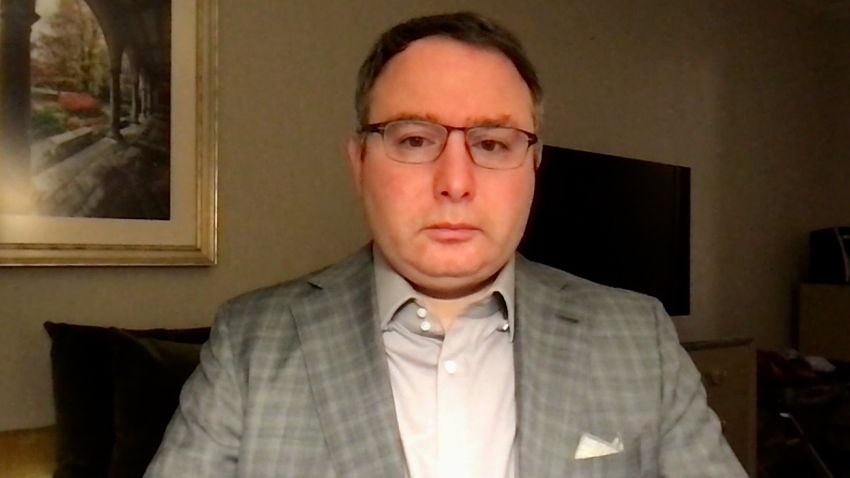
A risk Biden ‘wanted to take’
In the planning stages for this trip, Biden was presented with a range of options for a visit to Ukraine but decided that only the capital Kyiv made sense as a venue, a person familiar with the matter said.
The President never seriously considered any other locations – if he was going to go to Ukraine, he wanted to go to Kyiv.
As Biden was briefed over several months on the planning for a potential visit, the person said that Biden only once expressed concern about the risk of a visit to Ukraine – but that was about the extent to which his visit could endanger others, rather than about his own safety. Other officials were extremely concerned about Biden’s own safety and prepared a series of security contingency plans for the trip.
“This was a risk that Joe Biden wanted to take,” said White House communications director Kate Bedingfield. “It’s important to him to show up, even when it’s hard, and he directed his team to make it happen, no matter how challenging the logistics.”
On Monday, after the trip concluded, national security adviser Jake Sullivan declined to say whether Biden had to overrule Secret Service or military officials in order to proceed with the trip.
“He got a full presentation of a very good and very effective operational security plan. He heard that presentation, he was satisfied that the risk was manageable and he ultimately made a determination (to go),” Sullivan said.
CNN’s Jeremy Diamond contributed to this report.


